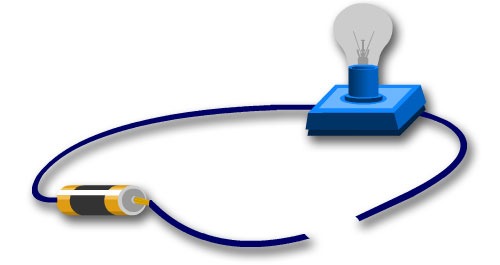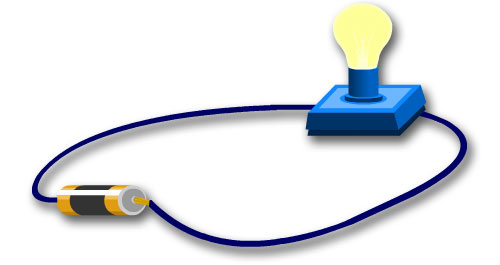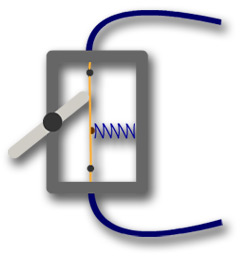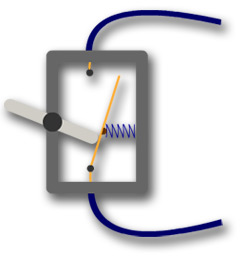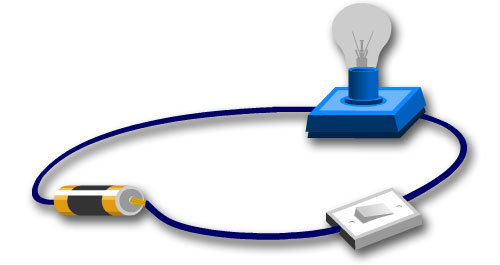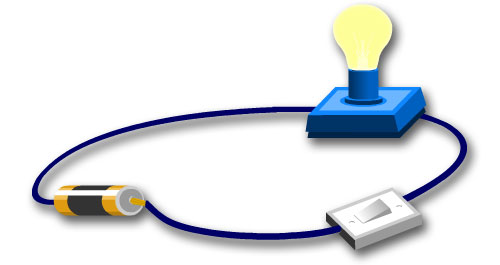If there's a gap in the circuitA collection of wires and electric components connected together in such a way that electric current can flow through them., the circuit isn't complete and so, electric current can't flow along the wire. Because no electricity is flowing through the bulb, it doesn't light up.
Try moving your mouse over the picture to see what happens if the circuit is completed.
So, if we want to stop the electric current flowing round a circuit we can disconnect the wire from the batteryA battery is two or more electric cells joined together that can produce an electric current when connected to an electric circuit. or make a gap in the wiring. But there's a better way - we can make a gap in the circuit using a switch.
How do switches work?
Inside a switch there are two strips of metal which are held apart by a spring.
Try moving your mouse over the switch to see how it works.
When the spring pushes the metal strips together so they are touching, we say that the switch is 'closed'. Electric currentElectric current is a flow of electric charges (electrons). can then flow through the switch and around the circuit. When the switch is 'open' the metal strips are pushed apart so the current can't flow.
The best way of making a gap in your circuit to stop current flowing is to put in a switch.
Run your mouse over the picture below to see what happens when we include a switch in the circuit. This is the same circuit you can find inside a torch.



